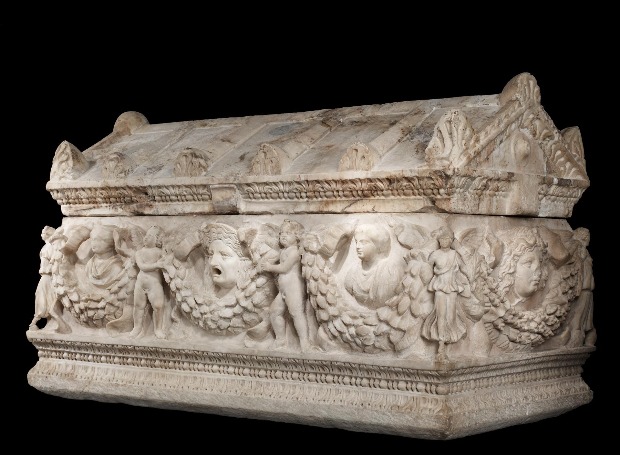British archaeologists have discovered an ancient Roman stone tomb in the Sydney Gardens of Bath, a UNESCO World Heritage Site. There were two skeletons in the sarcophagus, with the second lying at the feet of the first, which may be evidence of a sacrifice. Archaeologists believe they will be able to better understand the pagan funeral rite that existed in Britain about two thousand years ago. The find is reported by the BBC.
The English city of Bath, located in Somerset, was included in the list of UNESCO World Heritage Sites in 1987 as a place of outstanding value for all mankind. One of the reasons for getting into this prestigious list was the ruins of the ancient Roman era.
On the territory of the central attraction of the city – Sydney Garden – restoration work began in 2020 with the participation of archaeologists. This place once attracted the attention of the Romans primarily because of the thermal springs located here. They left behind not only a “bath complex”, but also an ancient cemetery, the first finds on which were made when the Sydney Garden was laid in the 18th century.
Kelly Madigan worked with colleagues from the commercial archaeological service L – P: Archeology to excavate restoration work in Sydney Gardens in Bath. They discovered an ancient Roman stone tomb containing the remains of two people. The grave goods consisted of small red and blue beads, as well as a ceramic vessel that may have been used to offer food.
Archaeologists noted that this is an extremely rare find that makes it possible to study a pagan burial ritual that existed about two thousand years ago. Its unusualness lies in the fact that human skeletons are directly associated with the coffin, in addition, there were cremated remains nearby. One of the people was placed in a tomb made of limestone, lying on his stomach, the second was at his feet. Scientists suggest that this is likely evidence of a sacrifice.
After detailed research, the sarcophagus is planned to be exhibited in the Temple of Minerva in Bath. Human remains will be reburied until 2026.
Earlier on the site N + 1 talked about other archaeological discoveries of ancient Roman burials. For example, Belgian scientists discovered in the catacombs of Saints Marcellinus and Peter a jaw belonging to a slave from Nubia or Central Sahara, and in Hungary they found a multicultural cemetery from the era of the decline of the Roman Empire.
Photo: Ancient Roman sarcophagus with garlands











